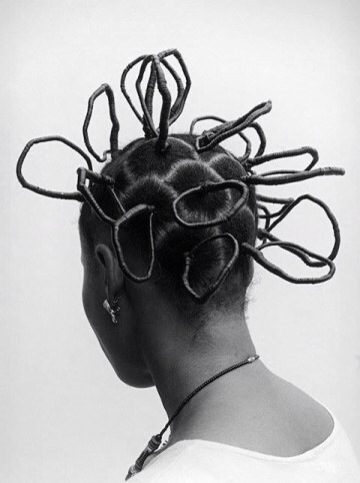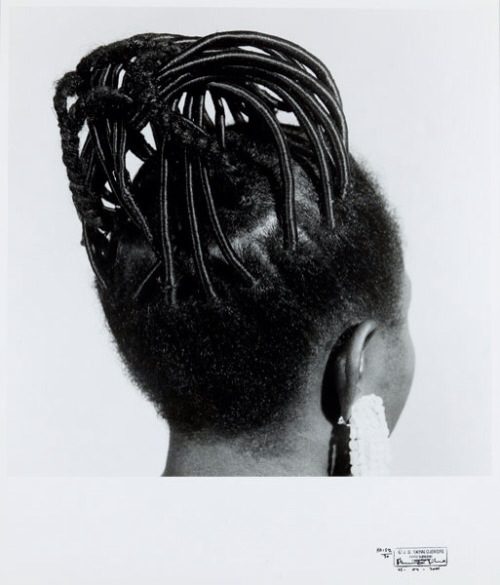Johnson Donatus Aihumekeokhai Ojeikere (J.D. ‘Okhai Ojeikere) was born in 1930 in Ovbiomu-Emai, a rural village in South Western Nigeria. He worked and lived in Ketu, Nigeria. At the age of twenty he pursued a future in photography, which was out of the ordinary for people in Nigeria, especially those in his village. Cameras were not of high demand and were of low priority as they were considered a luxury. However, ‘Okhai Ojeikere was passionate about photography and in 1950 bought a modest Brownie D camera without flash, and had a friend teach him the fundamentals of photography.
‘Okhai Ojeikere started out as a darkroom assistant in 1954 at the Ministry of Information in Ibadan. After Nigeria gained its independence in 1960, Ojeikere pursued his first job as a photographer. In 1951 he became a studio photographer, under Steve Rhodes, for Television House Ibadan. From1963 until 1975 Ojeikere worked in publicity at West Africa Publicity in Lagos. During his time in publicity, specifically in the year 1967, he joined the Nigerian Arts Council. In 1968 he began one of his largest projects as he documented Nigerian hairstyles. This was a hallmark of Ojeikere’s work and he had printed approximately a thousand pictures of different African women’s hair.
A large selection of Ojeikere’s work was included in the arsenale section of the 55th Venice Biennale d’arte, “Il Palazzo Enciclopedia” curated by Massimiliano Gioni in 2013.
J.D. ‘Okhai Ojeikere died on February 2, 2014, at the age of 83.
-Wikipedia
Known for his stunning documentation of hair styles and sculptures, J.D. Okhai Ojeikere was a Nigerian photographer who began his career in 1954 as a darkroom assistant at the Ministry of Information, Ibadan. He was born in 1930 and bought his first camera in 1950, a Brownie D.
A year after Nigeria gained independence, he began working at Television House Ibadan as a studio photographer under Steve Rhodes. He joined the Nigerian Arts Council in 1967, and 1968 saw the start of his documentation of Nigerian hairstyles, a project that would become his trademark. However, his first solo exhibition wasn’t till 1995, when his work showed in Nigeria and was also shown outside the country for the first time, as part of an exhibition in Switzerland.
“You know, nature gives every human being a role to play in life. It happened to be that by nature, I am created to be a photographer. And being a photographer does not mean that I have to cover all aspects of photography. I am not a war photographer, I am a civil photographer. And I have an urge to document culture, not wars and civil strife.”











Hi my name is Jacqueline and I just wanted to drop you a quick note here instead of calling you. I discovered your The Photography of J.D. ‘Okhai Ojeikere’Lost Hairdressers | Lost Hairdressers page and noticed you could have a lot more visitors. I have found that the key to running a successful website is making sure the visitors you are getting are interested in your niche. There is a company that you can get targeted traffic from and they let you try the service for free for 7 days. I managed to get over 300 targeted visitors to day to my site. Visit them here: http://txsc.us/t4ut